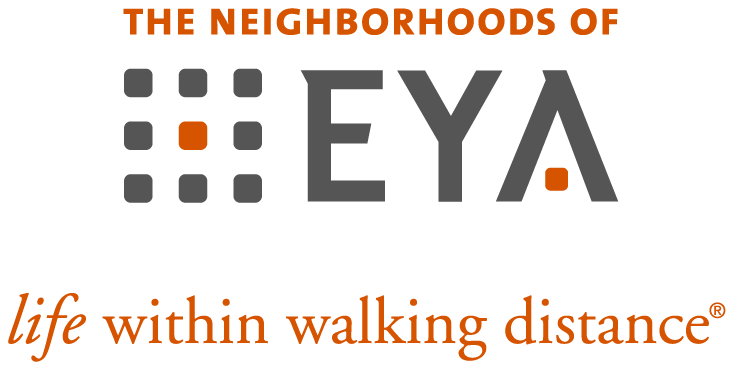Expert insights: How to create a closet you’ll love
Design | Reston Station | Graham Park | Tysons Ridge | reservoir district | farmstead district | storage solutions | northside | Closet organization | closet storage | Westbard Square
By: EYA Homes on February 14th, 2024
If you have been putting off the task of organizing a messy or overcrowded bedroom closet, there’s no better time than a cold winter day to finally get to it. But not sure where to begin? The design experts at EYA’s longtime storage solution partner The Tailored Closet of Greater Washington, DC are here to help. Read on to learn about how to start fresh and reorganize your closet, tips on how best to organize and store items such as belts and shoes, storage solution options and more.
New EYA Townhomes in DC, MD and VA
Learn More
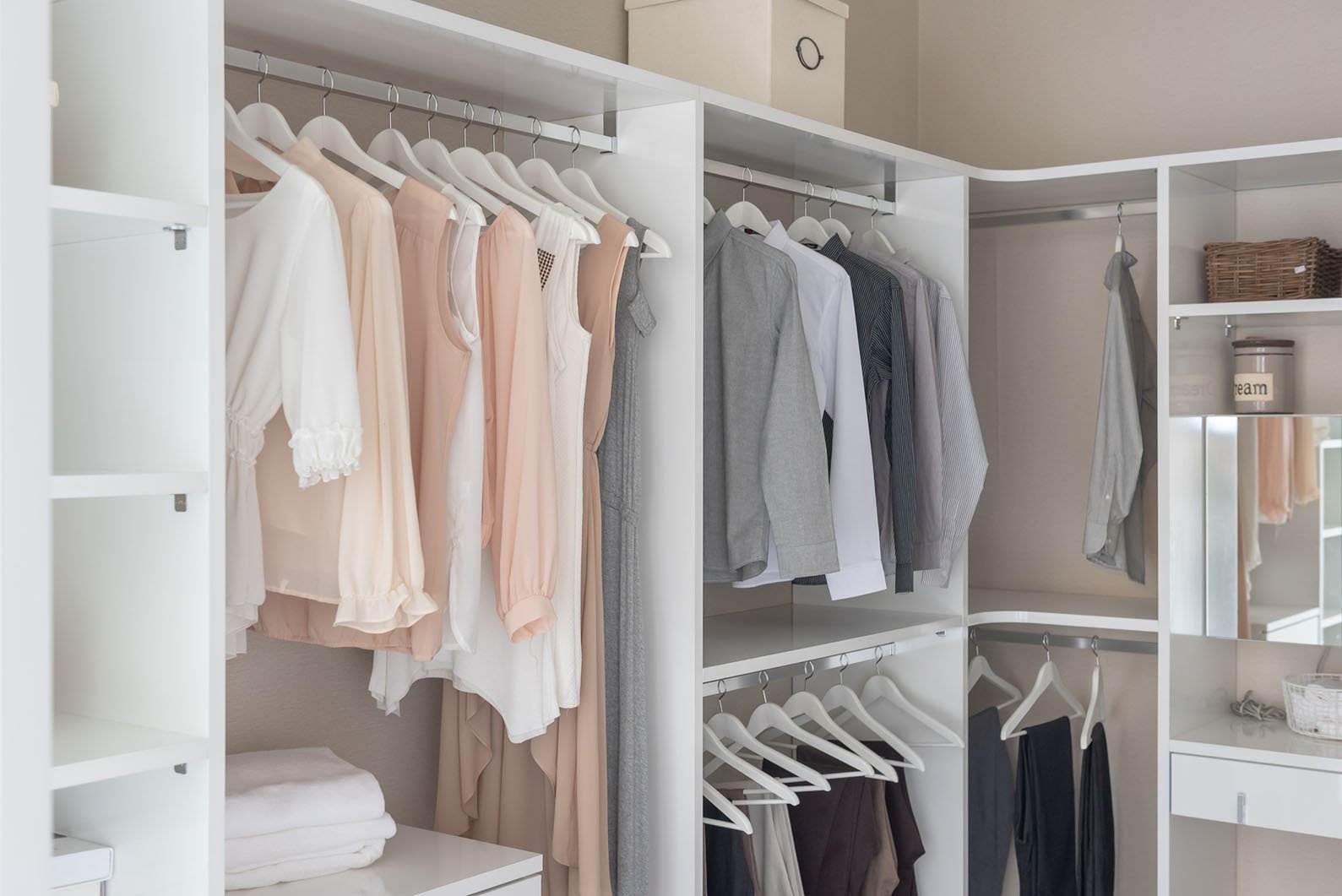
How to (Re)Organize Your Closet
Organizing a closet is more than just tidying up – it’s about creating a functional space that makes your daily routine smoother. Whether you are starting fresh in a new home or looking to reorganize your current closet, below is a step-by-step guide to help you through the process.
Step 1: Remove everything & make item categories
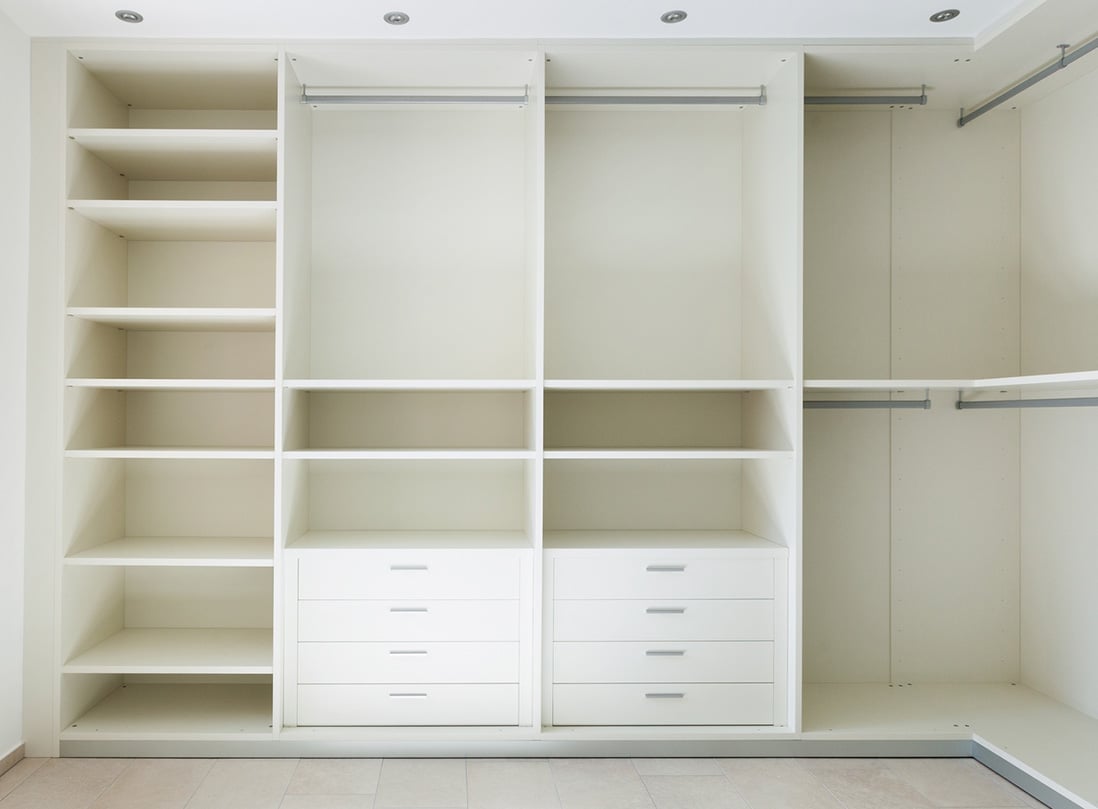
Begin by taking everything out of your closet. Yes, everything! Starting from scratch will help give you an idea of everything you have and what items you may be missing (or have too many). Next, organize the items into categories such as dresses, t-shirts, shoes, belts, ties, etc.
Step 2: Decide what to keep

Now it’s time to start thinking about what you still wear and love, and time to purge items you no longer wear or like. Create the following piles:
- Keep - items you still love and wear.
- Donate - items in good condition but may no longer suit your tastes.
- Trash - ripped, torn or discolored items that can’t be donated.
- Sell – if you prefer to sell certain items to get a return on your investment, there are a number of online marketplaces available.
Expert Tip: How to know when you should get rid of an item? The experts say if you haven't worn/used it in the last 12 months, then you likely never will.
Where to donate used clothes in the greater Washington, DC area? Below are some of the local organizations that accept used clothing. Clearing out your closet can not only benefit you, but others as well!
- Goodwill of Greater Washington: Goodwill accepts donations of gently used clothing and other items. They have a number of drop-off locations throughout the D.C. area.
- The Salvation Army National Capital Area: With multiple donation centers and thrift stores, The Salvation Army is another option for donating used clothing.
- Suited for Change: Provides professional attire, coaching, and skills training to women in need who are seeking employment.
- A Wider Circle: This organization focuses on poverty alleviation and accepts donations of professional attire and casual clothing.
- Martha’s Table: Supports families in need and they welcome donations of clothing for children and adults.
Step 3: Clean your closet
You are starting fresh, and that includes having a clean closet. Take this opportunity to wipe off any shelves, clean the floor, get rid of any cobwebs and have a nice clean space to enjoy.
Step 4: Determine what storage solutions may be needed
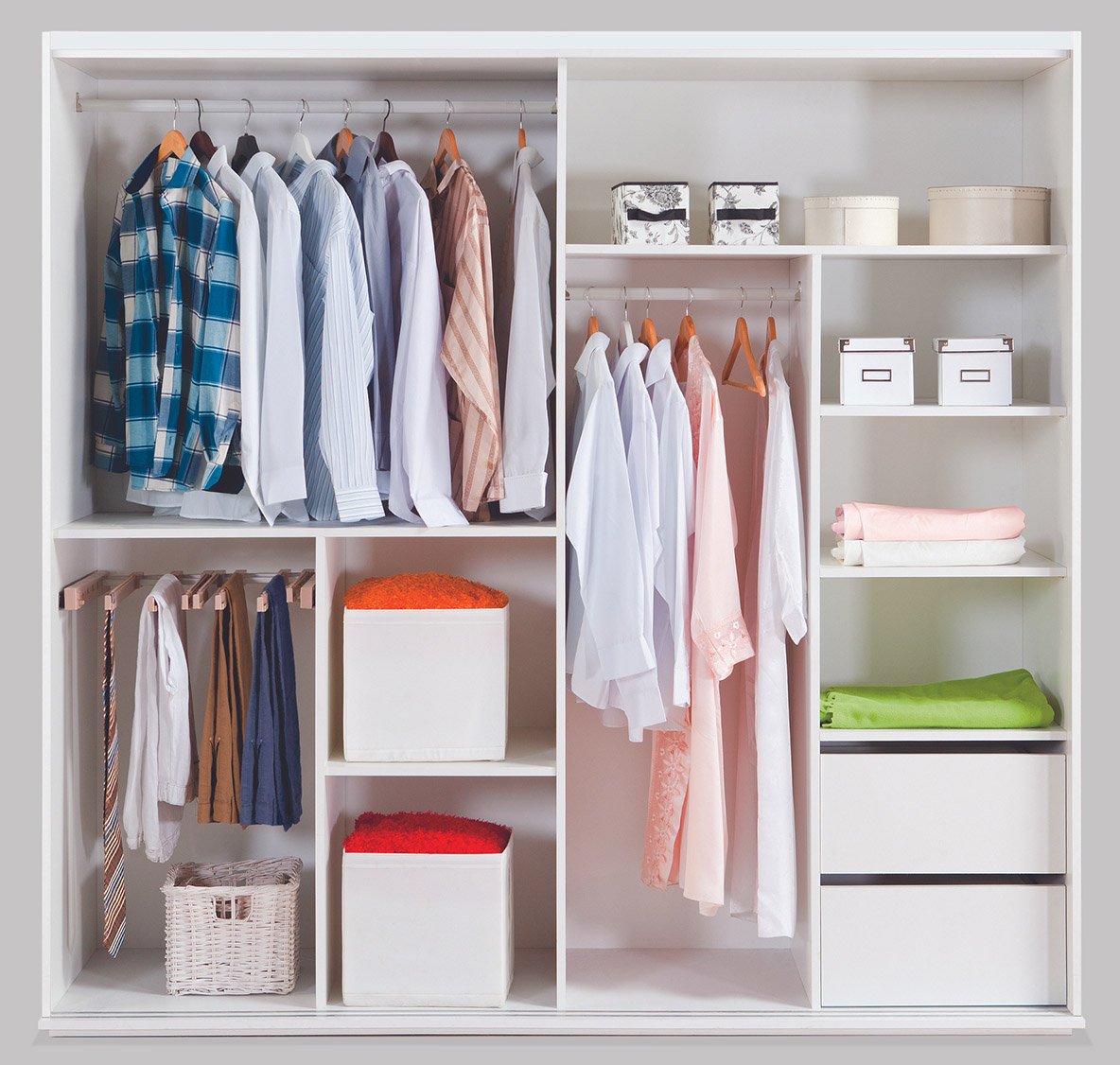
Take a look at your categories of items and determine what storage solutions may best suit your needs. Do you have a lot of shoes and could benefit from shelves or a shoe organizer? Do you have loose items that should be kept in a bin or basket? Below are some tips on storage solutions that could be helpful depending on your wardrobe needs.
- For shirts and shorter items, consider double rods (one up high and one below it) to double the amount of shirts that can fit in that section, or place a shelf below a rod (as shown above) to make room for other items.
- For long dresses and pants, be sure to have a space with a single rod so there is room for these items to hang.
- For shoes, consider a hanging shoe storage system on the back of the door, adding a shelf or shoe rack.
- For sweaters, consider adding a shelf or drawers to have them nicely folded and avoid hanger marks.
- For belts, jewelry, undergarments and other loose items, boxes/baskets or a small dresser could be placed in the closet to keep these nicely in place and tucked away.
Effective organization relies on having the right tools and solutions. Shelving, dividers, baskets, drawer organizers to keep folded items, shoe racks and more can go a long way in keeping your closet organized. And with a variety of options available, they can provide solutions for any budget.
Step 5: Define specific areas and your organization method
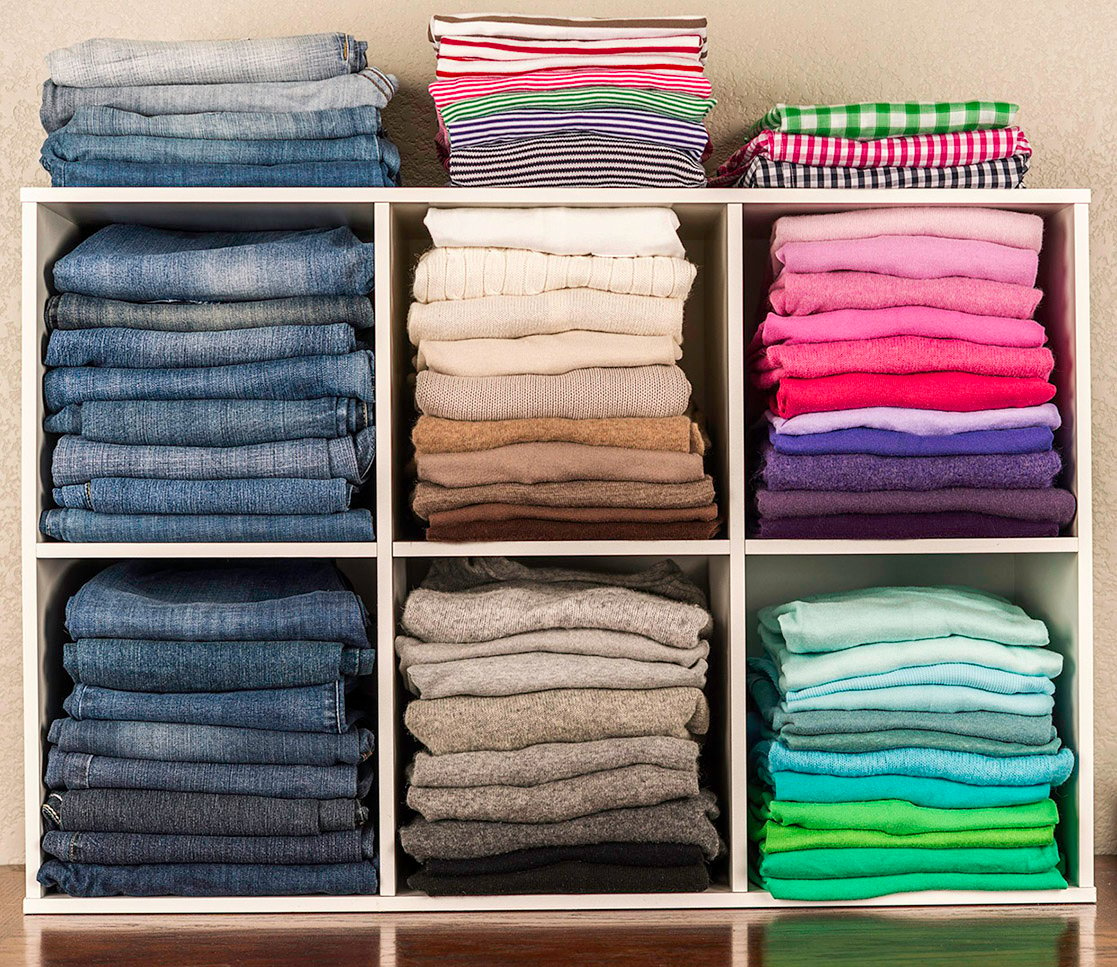
Now that you have gotten rid of the items you no longer want or wear and have the storage solutions you desire in place, it's time to define the areas of your closet and your organization method. You should know where each category of item will be placed (for example: shirts on top rod, sweaters on shelves, purses on hooks, etc).
How you decide to organize your items is a personal preference. Some people prefer to organize clothes by category (short sleeve shirts, long sleeve shirts, etc) while others organize clothing groups by color. Here are some of the many ways you can choose to organize your items:
- By clothing type - all dresses together, all pants together, etc.
- By color - all items regardless of type are grouped together by color.
- By complete outfit - shirts are paired with matching pants, and maybe even a complementing necklace.
- By season - sweaters and warm pants are grouped together, while t-shirts and shorts are together.
- By most often worn - perhaps you have your favorite go-to outfits that are frequently worn and are kept up front and center, easy to grab and go.
Whichever method you prefer, creating a system of organization (and sticking to it!) can help streamline your daily routine.
Step 6: Return items to closet
Start returning all your items to the closet, following your method of organization. It will be so fun to watch your newly organized closet come together!
Step 7: Commit to the plan and regularly reassess your needs
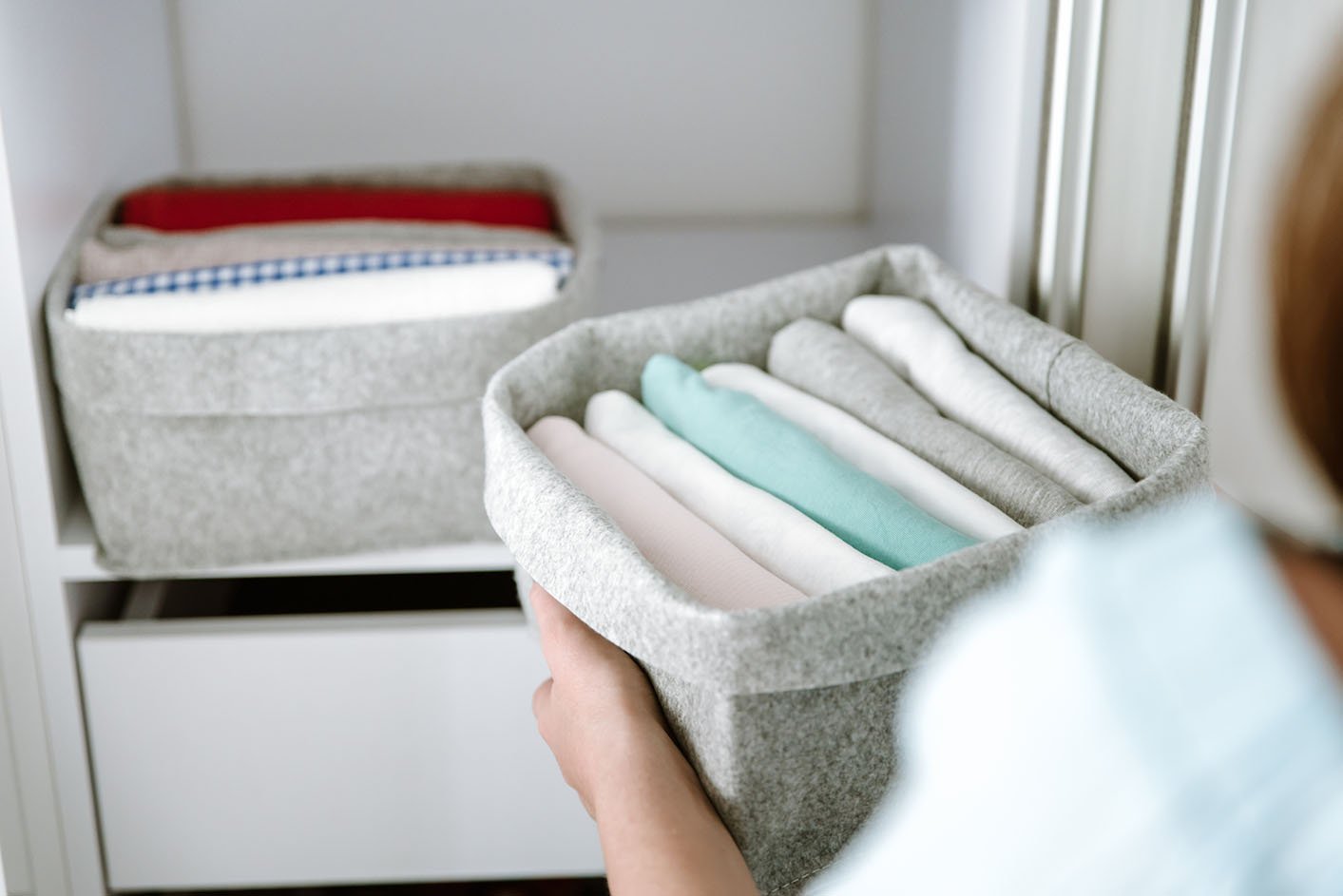
Experts say that any new habit takes three weeks of commitment to stick. So, good advice may be to pay special attention to your habits for the first three weeks. Is this new system working for you? Is it easier for you to find things? Are you committed to keeping it organized? Take just few minutes at the beginning and end of the day to store items away, hang clothes in the system you prefer, straighten your jewelry, and all these small steps will eventually become habits that you’ll be glad you now have.
And to ensure long-term success, set a schedule to reassess your closet's organization. Seasonal changes are a great time to declutter and reorganize based on your current needs and preferences.
Additional Tips & Resources
We love organizing as much as our partners do at The Tailored Closet, so we wanted to know more! Below are some additional tips and resources for a stylish and organized closet you'll love.
How do you best organize a small closet?
Space is limited so use it wisely. Focus on efficiency and the right storage solutions for the items you have. For example, there are hangers that have multiple hooks and can store more than one pair of pants or purses, etc. And be sure to maximize the vertical space.
What are some low budget storage solutions that can give the most bang for the buck?
Instead of built-in shelving, use a simple bookshelf. Instead of built-in drawers, use a small dresser. Baskets and bins can go a long way in keeping a tidy closet.
What items are best to put on shelves?
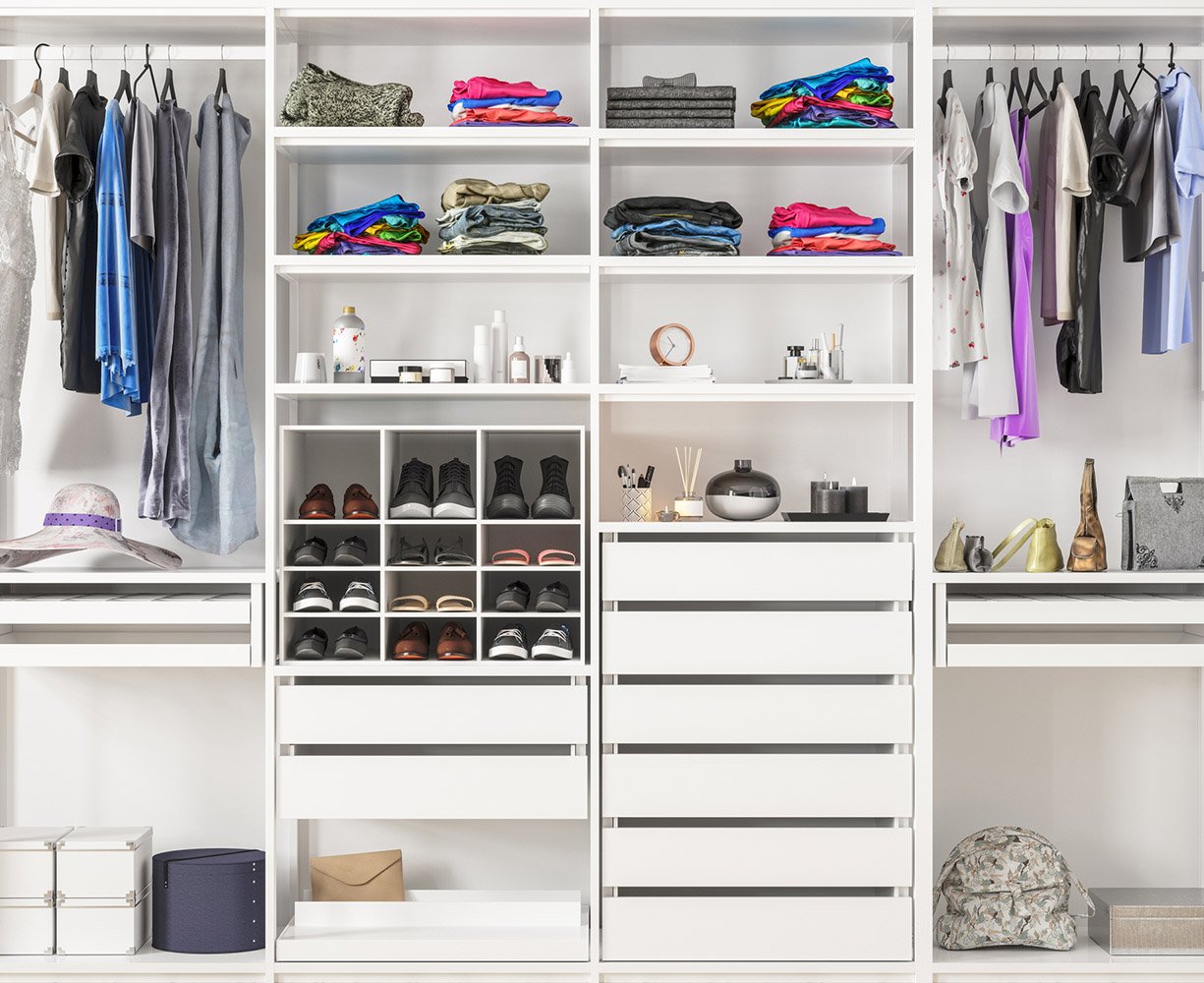
Shelves offer great options for many items, including sweaters, shoes, purses/jewelry, t-shirts and more. Shelf dividers can help keep the shelves organized and allow for more storage.
How is it best to store seasonal items?
Seasonal items may be rotated around the closet depending on the time of year and what you need. When you aren't using sweaters for example, you could place them high on a shelf that is out of the way. If space is limited, consider extra storage such as an under-the-bed flat storage box.
What are some tips for making your closet look sleek and stylish?
Consider matching hangers. This can give a very sleek and organized look to your closet. If you have a shelf, place a decorative jewelry storage stand on it to display some of your favorite pieces or showcase a few of your best purses.
What are the best types of hangers to use?
This can depend on what types of clothes you are using them for. Also, there are space saving hangers that are good for small closets. Click here to read about the various types of hangers.
What are the best storage solutions for the following items?
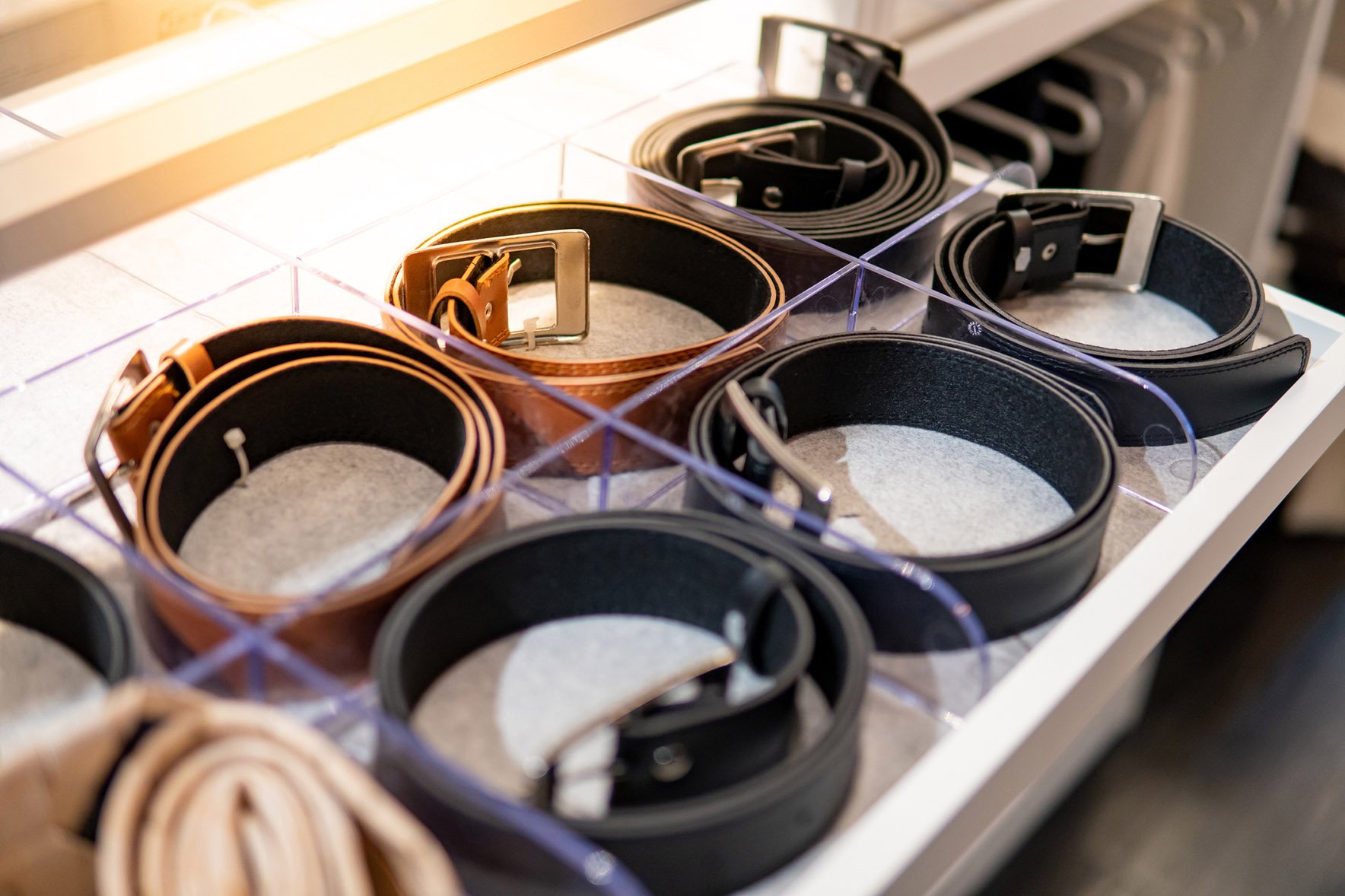
The following articles provide great tips on organizing and storage solutions for:
- Shoes: How to Organize Shoes
- Sweaters: 10 Sweater Storage Ideas for the Closet and Beyond
- Belts: How to Organize Belts - 6 Professional Organizer Recommended Methods
- Jewelry: 19 Jewelry Organization Ideas
- Purses: 26 Best Ways to Store Handbags and Purses
Additional resources:
- 16 Ways to Squeeze Extra Storage Out of a Small Closet
- 6 Signs It's Time to Organize Your Closet
- 7 Cheap Ways to Organize Your Closet for Under $50
- How to Organize Clothes in Drawers: A Step-By-Step Guide
Organizing a closet effectively requires a blend of decluttering, categorization, and the right storage solutions. By following these steps, you can create a space that not only looks great but also makes your daily routine easier and more enjoyable.
We hope these tips help you turn your closet into an area that maximizes space and meets your storage needs, while adding a beautifully organized element to your home.
And if you'd like help from the pros, the folks at The Tailored Closet can provide expert advice and solutions for any size closet. They offer a variety of storage solutions such as: drawers that can be tailored with jewelry trays, valet rods for easy clothes hanging and steaming, hidden ironing boards to save space, tilt out hampers to store clothes before they head to the laundry, and much more.
Interested to learn more about their design solutions and see how they work with EYA homeowners? Watch this video below.
Happy organizing!
